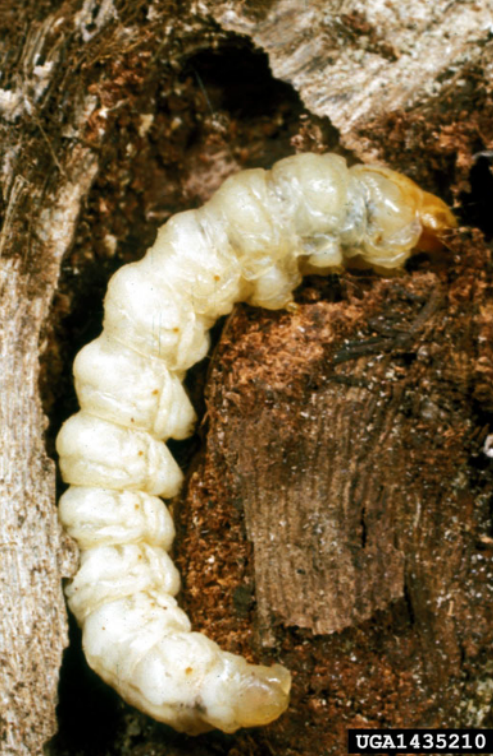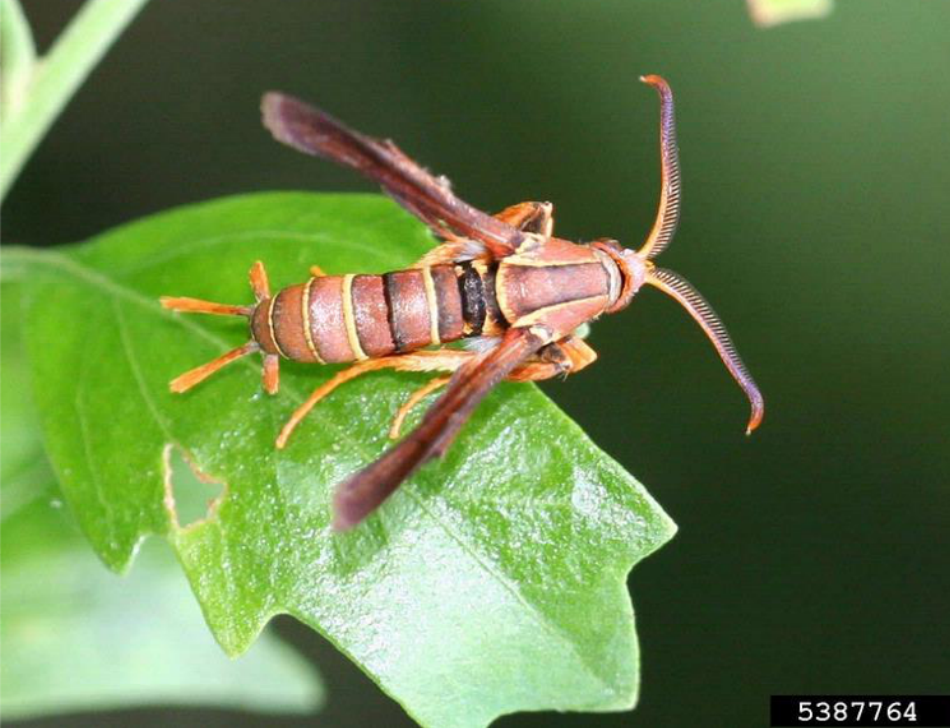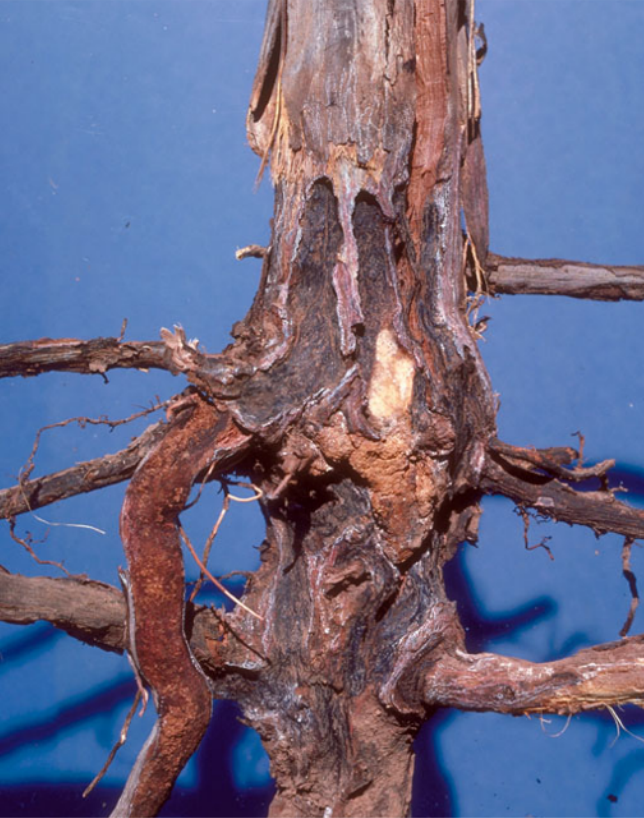Vitacea polistiformis (Harris)
Author: Brett Blaauw, Fruit Entomologist, University of Georgia, 2021
Description
Immature stages: The larvae are cylindrical, cream-colored with a brown head, and 1.5 inches long when mature.
Adult stage: Adult GRB are day flying moths, reddish-brown in color and resemble paper wasps, particularly when flying.


Biology
GRB is a clearwing moth with larvae that tunnel into the larger roots and crown of grape vines and feed below the soil surface.The adults generally emerge late June or early July, mate, and then females lay eggs on the soil surface, leaves, and weeds within eight days of emerging. Eggs hatch in approximately two weeks and larvae immediately tunnel into the soil in search of grape roots.Larvae spend nearly two years feeding within the roots. During the summer of the second year, larvae will pupate near the soil surface before emerging as adults.
Management
Because the adults and larvae often go unnoticed until the vine begins to decline, management can be difficult. Fortunately, GRB adults can be monitored using a simple bucket trap with pheromone. The abundance of moths captured on a weekly basis can be used to determine both presence of grape root borer in your vineyard and to determine peak activity periods to time management activities.
Eliminating weeds around the base of vines reduces egg laying sites and improves spray coverage. Another management strategy is called, “mating disruption.” Through the deployment of pheromonefilled dispensers within your vineyard, mating disruption works by making it difficult for males to find females to mate, and without mated females, there are no new larvae to attack the vines. Efficacy of this approach significantly increases following two years of implementing mating disruption throughout the entire vineyard.
Mounding is an alternative management strategy that involves placing mounds of dirt, approximately 10 inches high, around the base of each of the vines mid- to late June. This practice makes it difficult for adults to emerge and decreases the area for females to lay eggs. Research has shown that mounding can reduce adult emergence by up to 90%, but is labor-intensive. After August, mounded dirt should be removed from the base of the vines.
Lorsban (chlorpyrifos) is the only insecticide labeled for control of GRB. This treatment is applied directly to the ground and base of the vine under the trellis wire at least 35 days prior to harvest. The insecticide must target the emerging and egg-laying adults, thus applying Lorsban late June to early July is best for managing grape root borer. Most grape growers do not use Lorsban for control, although it is worth mentioning here as it is the only insecticide labeled for control of GRB. And while it is still available and registered for use, it is no longer being produced and will likely not be available in the coming years. Note: do not allow spray to contact fruit or foliage.
The last management strategy is the use of entomopathogenic nematodes. These are beneficial round worms that are able to kill soil-dwelling insects. Commercially available species, such as Heterorhabditis bacteriophora and Heterorhabditis megidis, have been shown effective at killing GRB larvae and are available from various sources. The nematodes can be applied with standard spray equipment as a drench to the base of the vines, and once in the soil, nematodes will seek out and can kill GRB larvae, even after they tunnel into the roots. This is an approach that has the potential to be as effective as Lorsban, but works best when the soil is kept moist and must be re-applied annually. Further research is needed to test the efficacy of this approach in GA grape production.
